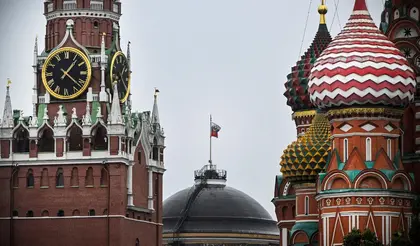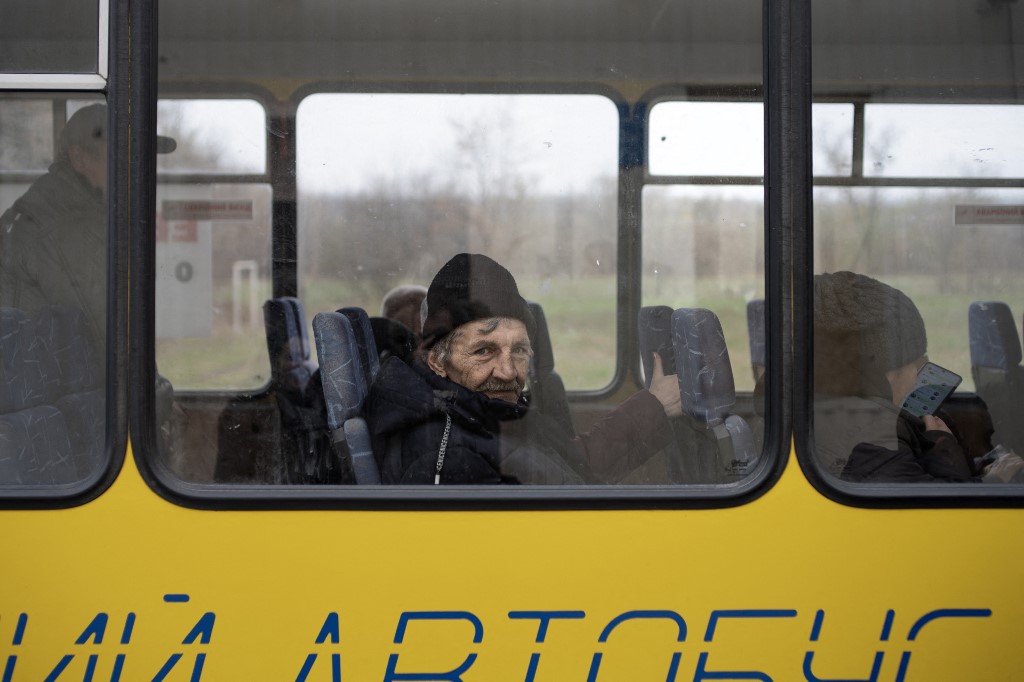In the early morning of Aug. 6 Russian milbloggers started to report what they called another “unsuccessful” Ukrainian incursion by about 100 soldiers across the border into the Kursk region. They immediately assumed that this was another attempt by one of the anti-Kremlin militias such as the Freedom of Russia Legion – a nuisance but militarily insignificant.
It was pretty quickly obvious that this incursion was potentially more serious than what had happened before. One pro-Russian milblogger wrote on his Telegram channel: “The [Ukrainian] enemy… [is] saturating the combat area with air defense and electronic warfare systems. The AFU [Armed Forces of Ukraine] seem serious about advancing and are making continuous efforts to hold part of our territory. The situation is complicated.”
JOIN US ON TELEGRAM
Follow our coverage of the war on the @Kyivpost_official.
By midday the acting governor of the Kursk region, Alexey Smirnov, was reporting how Russian border guards supported by military units “have prevented a breach of the border,” a message that was repeated by Moscow’s mainstream and social media channels.
Towards evening the message from the Russian Ministry of Defense was “having suffered losses, Ukrainian sabotage and reconnaissance groups have retreated to its territory.”
By the next morning the propaganda message had changed, where previously pro-Kyiv Telegram was accused of posting “fake information about a large-scale operation in Kursk,” intended to panic the local population, Moscow’s milbloggers were now talking about a “large-scale Ukrainian operation in the Kursk region” and advising their subscribers not to believe the Russian military claims that the Ukraine attacks had been repelled.

Russia Is at War With the West – What Needs to Be Done
Putin takes to the stage
On Wednesday afternoon Russian President Vladimir Putin held a televised meeting with the heads of law enforcement agencies attended by the Defense Minister Andrei Belousov, Secretary of the Security Council Sergei Shoigu, and Director of the Federal Security Service Alexander Bortnikov.
General Valery Gerasimov, the Chief of the General Staff gave a situation report over a video link from “an operational control center.” Gerasimov’s report put a positive spin on the military action which was largely contradicted from most other battlefield reports - in fact some Russian social media accused him of lying!
Gerasimov claimed that units of the AFU numbering up to 1,000 troops had been halted by border guards and reinforcement units, using air strikes, missile and artillery fire killing at least 100 and wounding 215, with 54 armored vehicles, including seven tanks destroyed.
In reply, Putin referred to the incursion as a “large-scale provocation” without commenting on what military action should be taken. The Kursk agenda item was dealt with in less than five minutes before moving on to a report on Shoigu’s trip to Iran and Azerbaijan.
From a propagandist’s perspective, the presence of Putin at the meeting gave out a similar contradictory message which has been a feature of all of their efforts in respect of the Kursk situation to date.
The message is intended to show that everything is under control because the president was involved, and the short perfunctory briefing indicated that the “invasion” was not as serious as some reports would have it. Conversely, Putin’s involvement and the need to televise the meeting indicated to many observers that the threat was more serious than the Kremlin was admitting; he rarely took part in such meetings unless something extraordinary was being reported on, normally leaving his aides to make any necessary public comment.
The video war
There have been numerous assertions on how the war in Ukraine was receiving unprecedented video coverage, much of it emanating from social media embedded with troops or produced by the troops themselves, a lot of it appearing within a few hours and sometimes a few minutes after the event it depicts. The attack on Kursk is no exception.
Ukrainian social media published video captured by the Khorne Group, part of Ukraine’s 116th Separate Mechanized Brigade, on Thursday and Friday, Aug. 8 and 9. It showed how a possible HIMARS missile strike destroyed a Russian army column near the village of Oktyabrskoye in the Rylsky district of the Kursk region.
The veracity of the images was confirmed when geolocated Images and video posted on Telegram early on Friday morning showed the burnt-out wreckage of at least 14 vehicles and numerous bodies, some say as many as 500, lying at the side of the road.
Russian media tried to counter this with videos of successes of their own forces against the advancing Ukrainian formations – only they were caught out by analysis of the images they chose to post, as reported by the independent news site The Insider.
On Aug. 9, the Russian Ministry of Defense published a video that purported to show a Su-34 fighter bomber releasing a FAB 3,000-kilogram (6,600-pound) glide bomb against a Ukrainian troop assembly area in the Sumy region.
It went on to say: “Having received confirmation from intelligence that the targets had been destroyed, the crew returned safely to the departure airfield.”
In fact, the video had been filmed sometime previously and had previously been published by the state news site TASS on July 14, almost a month earlier.
On Aug. 10, the Russian state news agency RIA Novosti, published a video, provided by its Ministry of Defense, showing Russian helicopters striking Ukrainian personnel and armored vehicles using S-13 air-to-ground missiles. Analysis of the video showed the attack actually taken place some time earlier n the area around Kreminna and Chasiv Yar in the Luhansk and Donetsk regions.
“Radio Silence” – official and unofficial
A feature of the Kursk incursion has been the limited information put out by Ukraine’s official information channels. They have confirmed it's happening but have been relatively tight-lipped lipped, giving out little, if any, information on the aims of the cross-border action, timeframes or even tactical successes. President Volodymyr Zelensky has done little more than to acknowledge it is happening and to thank Ukraine’s commanders and soldiers for their efforts and sacrifices, placing as much emphasis on what’s happening in Kharkiv and the Donbas as in Kursk and latterly Belgorod.
A similar approach is occurring within Russian official sources although not by choice. There are reports that the Kremlin has instructed its TV, print and internet mouthpieces to play down the situation, to avoid reporting the incursion as the opening of a “new front,” to avoid comparisons with the 1943 Battle of Kursk, and any reports about the Kursk Nuclear Power Plant or any reference to the Ukrainian military gradually advancing towards it are totally prohibited
The message has to be that everything is under control, tell the people to “keep the situation calm” and assure everyone that Putin “won’t abandon anyone in peril,” according to the independent Russian news outlet Meduza. Even the usual procession of former generals and politicians toned down their usual “kill all the nazis” rhetoric during Sunday’s Rossiya 1 discussion program where the host, Olga Skabeyeva, called on her viewers to “pray for Kursk.”
Putin has declared that the military action in Kursk is a “counter-terrorist operation” (CTO) with the usual claims that Ukrainian forces are indiscriminately attacking civilians, their homes and civilian infrastructure. This has been underscored by the apparent appointment of Alexander Bortnikov, Head of Russia's Federal Security Service (FSB) to lead the operation in Kursk rather than Gerasimov or another senior general.
Russia has also called for a meeting of the UN Security Council for Tuesday, Aug. 13 to discuss “crimes committed by the Kyiv authorities” during its attack on the Kursk Oblast, according to the Ukrainian media outlet Ukrinform.
However, milbloggers from both sides are not showing the same levels of restraint as Moscow and Kyiv.
On the Russian side, criticism of Putin, Gerasimov, the Russian military and the government is increasingly featuring in pro-Russian posts. In particular, the decision by the Kremlin to categorize its actions in Kursk as a “counter-terrorist operation” (CTO) has been attacked with the most extreme military “Z-bloggers” calling for the imposition of martial law or even a full-scale declaration of war against Ukraine.
On the other side of the fence, Ukrainian milbloggers are taking great delight in reporting every successful capture of each village and part of Russia’s territory, the seizure of dozens of military prisoners and every successful weapons strike, even as Russian forces slowly get their act together.
The Kursk Nuclear Power Plant (NPP) features frequently on both Russian and Ukrainian social media, along with the gas metering station in Sudzha which is part of the Urengoy – Pomary – Uzhhorod pipeline. The consensus of speculation seems to be that it is Kyiv’s intention to seize it or at least the city of Kurchatov where it is located and negotiate with Russia to exchange it for the Zaporizhzhia NPP, which is currently occupied by Moscow’s troops.
Does Kursk strengthen or weaken Ukraine’s standing?
Attempts by Russian propagandists to drive a wedge between Kyiv and its allies has also largely failed.
A number of media outlets on both sides of the fence reported on Aug. 7, that Ukraine had kept the incursion secret from its allies and that the US, in particular, was demanding explanations from Kyiv and would continue to prevent the use of its weapons to support the attack.
Asked during a press conference on this, the White House National Security Communications Advisor John Kirby said:
“Nothing has changed about our policy with respect to enabling or encouraging strikes or attacks inside Russia… with US-supplied weapons in the past, which is to target imminent threats just across the border.
“We are reaching out to our Ukrainian counterparts to get a little bit better understanding,” but added he would “let the Ukrainians speak to their operations one way or the other.
“We’re going to stay focused on making sure they have what they need to defend themselves,” Kirby said.
Many commentators feel that the Ukrainian incursion will actually serve to reinvigorate support for Kyiv that was beginning to wane in some areas because of the recent territorial losses in Kharkiv and the Donbas. The move into Kursk highlights that the AFU has learnt and adopted the armored maneuver concepts and skills that their Western instructors have been calling for.
What are the consequences of the Ukrainian operation?
Some analysts are calling the action in Kursk as the start of a summer offensive and a watershed moment. Militarily, despite Russian propagandists' assertions to the contrary, this does represent the opening of a second front and an opportunity for Ukraine to regain the military initiative after a year of costly and demoralizing defensive operations. In turn that will force the Kremlin to redeploy forces in defense of Russia itself.
Psychologically it’s a blow against Russian morale, once more showing the shortcomings of “the second army in the world,” and, in disrupting the daily lives of ordinary Russians, it is raising question marks over Putin’s regime.
At the same time, it has providing a boost to Ukrainians’ morale and strengthening Zelensky’s government’s hand in any future peace negotiations.
For many, though the most striking feature has been the almost total lack of a threat by Moscow to mention a nuclear response, even from Dmitry Medvedev, the former Russian president for whom it has become the default response to any Russian setback. Even the threat of an overwhelming missile attack on Kyiv’s command centers and cities has been left to some of the more extreme milbloggers to put it forward.
Putin, his official media, and even his most vociferous propagandists have, thus far, avoided any mention of a need to declare a state of war or any suggestion of increased mobilization perhaps concerned that this could further add to potential internal social discontent and undermine the government.
The views expressed in this opinion article are the author’s and not necessarily those of Kyiv Post.
You can also highlight the text and press Ctrl + Enter






